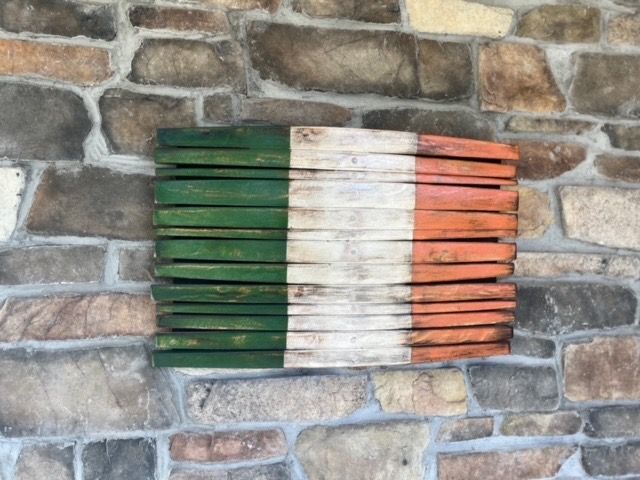The USS Allen with “Zig Zag” camouflage anchored in Queenstown/Cobh. Naval History and Heritage Command photo
By Ralph Day
The Naval Order of the United States, with aid from the Commodore John Barry Division, Division 1, D.C. AOH, the American Legion, Cork County Council and the Port of Cork, today marked the centenary of the arrival of the U.S. Navy's Destroyer Division Eight at what is now Cobh.
Upon arrival on May 4, 1917, Commander Joseph K. Taussig was asked when he would be ready to patrol.
His famous response of "We are ready now, Sir" remains a mantra for the United States Navy Destroyer Force.
Taussig commanded Destroyer Division 8, Destroyer Force, Atlantic Fleet, and when he steered his ships into Cork harbor (then Queenstown) he marked the first European presence of the United States Navy in World War 1.
The ships included the USS Wadsworth (DD 60) (Flagship DesDiv8), USS Porter (DD 59), USS Conyngham (DD 58), USS McDougal (DD 54), and USS Wainwright (DD 62).
The evening of May 4, the American officers were hosted at dinner by Vice Admiral Sir Lewis Bayly, the Commander in Chief of the Coasts of Ireland.
Reportedly, VADM Bayly asked Commander Taussig when the destroyers would be ready to begin patrol at which point came the famous response.
While Commander Taussig’s destroyers may have been the first, eventually the U.S. Navy presence in Cork and it surrounds included Battleship Division Six (in Berehaven, Bantry Bay), U.S. Navy Base Hospital No. 4 in Queenstown, and no less than five Naval Air Stations from Bantry Bay to Wexford to conduct anti-submarine operations.
The Queenstown Command (Cobh) centered at Admiralty House was the head of naval operations on the island of Ireland during WWI.
The command became of increasing, and later of critical importance, to the allied naval powers in securing the Atlantic sea-lanes.
It was also the main operational center of the U.S. Navy in Europe and was of some importance in the development and planning of naval strategies, tactics and technologies.
The National Capitol Commandary was approached last spring by Companion Sean Rickard of Kilarney, County Kerry for assistance in developing and implementing a historic wayside marker at what was Admiralty House and is now a Benedictine Convent.
The Commandary has worked extensively with the Cork County Council, The Cork County Historic Director, The Town Council of Cobh and the Port of Cork Tourist Bureau on this project.
The text for the marker is in both Irish and English.
The translation into the Irish was carried out by the Irish Studies Division of the Catholic University of America.
Graphics include pictures of the destroyers, battleships and aircraft of the U.S. Navy stationed in and around Cork.
Also joining the NOUS in the effort has been the American Legion in Ireland, the Ancient Order of Hibernians in America, and the Navy History and Heritage Command, which graciously provided the illustrations.
Ralph D. Day, a U.S. Navy veteran, is immediate past president, State Board of the District of Columbia Ancient Order of Hibernians.










